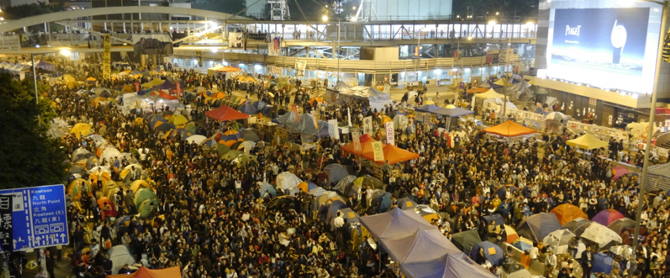Taksim, Tahrir, Occupy & Co.
with Dr. Nadine Godehardt, Stiftung Wissenschaft und Politik (SWP)
2015
A Lab Talk Series focussing on the interdependencies between urban space, society and international politics in times of crisis. Supported by the ZEIT-Stiftung and Forum Ebenhausen e.V

INTRODUCTION AND AIMS
Incidents on everyday urban spaces increasingly raise global attention. Civil resistance and protest movements frequently occupy public squares, financial and governmental districts or central city parks. People demonstrate against their national governments or join into spontaneously organised protests in support of (inter-)national issues. Images of demonstrations on Tahrir Square in Egypt (2011), Taksim Square in Turkey (2013), the Maidan in Ukraine (2013-4), of Occupy Wall Street (2011), the Sunflower-Movement in Taipei (2014), the Umbrella-Revolution in Hong Kong (2014) or the Pegida-Movement in Dresden (2015) strongly influence the global understanding of specific (inter-)national actors and crisis situations. Everyday urban places are in the process of becoming icons of international politics that are interpreted very differently depending on the chosen viewpoint (European, Russian, Chinese, Media, Politics, etc.). They reveal new forms of political articulation that underscore the intertwining of everyday and international politics.
In a series of lab talks, participants from various backgrounds discussed the interdependency of urban space, society, security, (inter-)national politics and the economy – focussing on the visualisation and new political meanings of urban space that go along with political protests and demonstrations.
EVENTS
#2 Taksim, Tahrir, Occupy & Co. Visuality and Urban Space
Lab Talk: 26 November 2015
At the second event we concentrated on specific ways of political articulation, particularly regarding the visualisation of urban spaces during civil resistance incidents and protests. After all, protest movements in everyday urban spaces are directly visualised through photographs, video clips as well as artwork (protest logos, street art etc.) that is usually produced by the demonstrators. The digital sharing of these visuals on social media 'virtualizes' and instantly 'internationalises' these spaces. Consequently, the protests in Egypt, Istanbul or Hong Kong are not only visible but also accessible for everyone everywhere. Thus, we have protest communities on the ground and growing digital communities that not only facilitate the immediate production and transportation of news (in form of visual imagery and others) from distant places to our home (and to our national governments) but also lay the ground for interaction among protesters as well as between protesters and non-protesters. Further questions: Is it possible to identify spatial characteristics that provide spaces with the potential to transform from 'everyday' to 'icon of international politics'? How does the distribution of these visual representations in social media influence style of protests and demonstrations? And to what extent is the discussion about the control of digital information affected?
More Info
Video recording
#1 Taksim, Tahrir, Occupy & Co. Political Meaning of Urban Space
Lab Talk: 8 October 2015
The first event assembled speakers with different backgrounds (architecture, urban planning, political theory, geography, international relations, etc.) who conceptually explored the political meaning of urban space. Key task was to highlight how incidents in everyday urban spaces actually affect (inter-)national politics. In this regard, we particularly focussed on civil resistance and protest movements that frequently occupy streets, public squares, financial and governmental districts or central city parks. Further up for discussion: To what extent has the increasing number of protests in urban spaces changed their significance in international politics? And what are the implications that result for local urban planning and urban design?
More Info
Video recording
SWP-STUDY: URBAN SPACES. PROTESTS. WORLD POLITICS
The ANCB series Taksim, Tahrir, Occupy & Co. prompted the SWP-Study Urban Spaces. Protests. World Politics (in German), which is available now online and as print version. The researchers examined urban protests movements with regard to three contexts: The relationship between Protest and Politics, the connection between Protest and Space and the link between Protest and Mediality.
ANCB PROGRAMME
Theme
#actors&agency
More
Concept Paper
Contact
Miriam Mlecek, [email protected]
ANCB Partners

